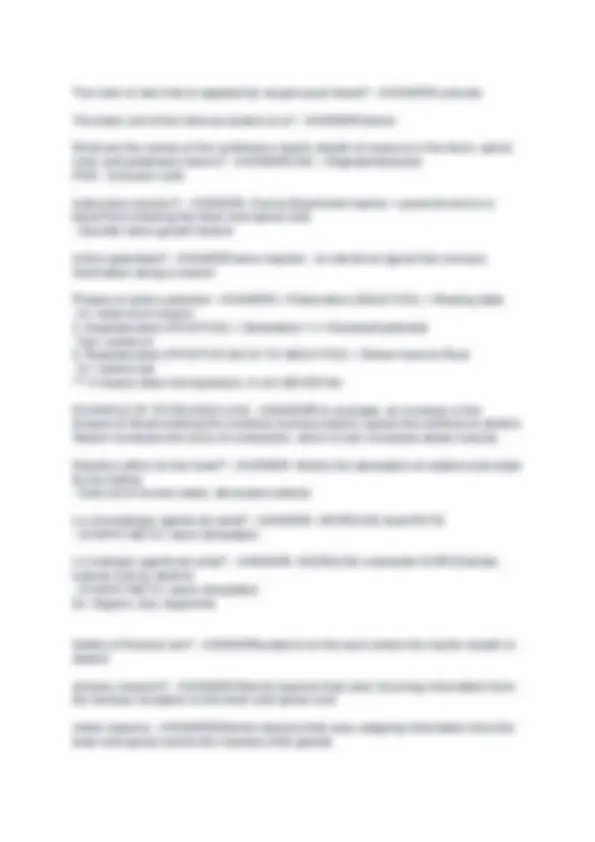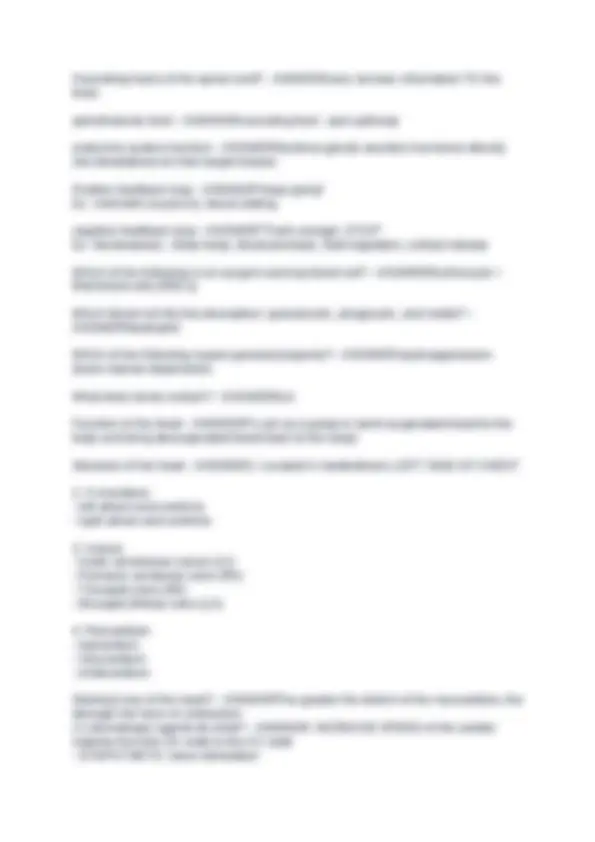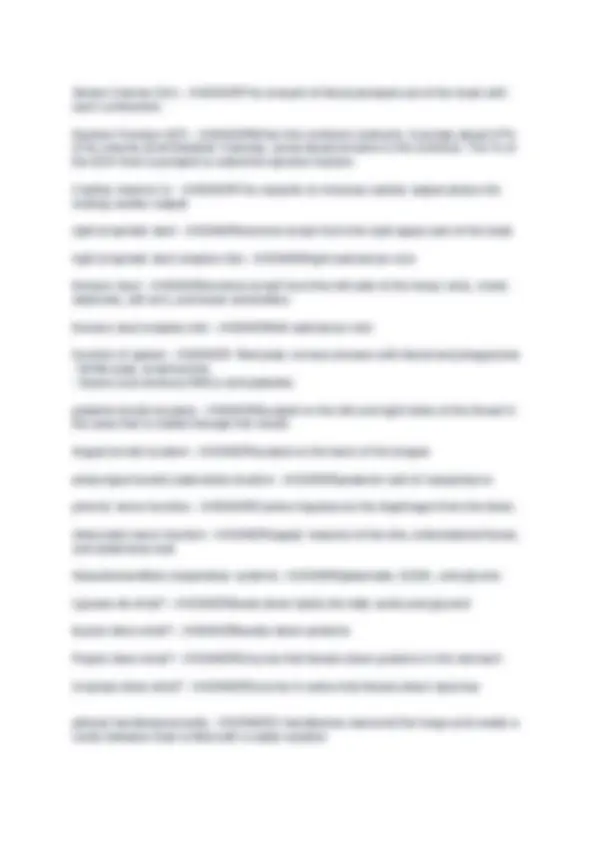





Study with the several resources on Docsity

Earn points by helping other students or get them with a premium plan


Prepare for your exams
Study with the several resources on Docsity

Earn points to download
Earn points by helping other students or get them with a premium plan
Community
Ask the community for help and clear up your study doubts
Discover the best universities in your country according to Docsity users
Free resources
Download our free guides on studying techniques, anxiety management strategies, and thesis advice from Docsity tutors
What best defines the nursing process? - ANSWER1. Assessment - identify a client's health care status 2. Diagnosis - actual or potential health problems 3. Outcomes identification 4. Planning - establish plans to meet the identified needs 5. Implementation - to deliver specific nursing interventions to address those needs 6. Evaluation - determine if goals were met What is the most effective process
Typology: Exams
1 / 6

This page cannot be seen from the preview
Don't miss anything!




What best defines the nursing process? - ANSWER1. Assessment - identify a client's health care status
What form explains the lapse when events are not consistent with facility or national standards of expected care? - ANSWERIncident report Although the patient denies pain, the nurse observes the patient breathing rapidly with clenched fists and facial grimacing. What is the nurse's best response to these observations? A. "I am glad you are feeling better and have no discomfort." B. "Where do you hurt?" C. "What you are saying and what I am observing don't seem to match." D. "It makes me uncomfortable when you are not honest with me." - ANSWERC. "What you are saying and what I am observing don't seem to match." What does therapeutic communication accomplish? - ANSWERForms a positive and trusting nurse-patient relationship and actively involves the patient in all areas of care. What therapeutic communication technique requires a great deal of skill and is not used as frequently as other communication techniques? - ANSWERTherapeutic silence (it conveys support, compassion, caring and concern) What is classified as information provided by the family when a patient is unable to provide data during assessment? - ANSWERSecondary A patient with a respiratory infection reports that he is not yet on an antibiotic. The nurse explains that the health care provider is waiting on the results of the culture and sensitivity. What does this test determine? - ANSWERCulture tests to find germs. Sensitivity tests to see what kind of medicine (antibiotic) will work best to treat the infx What bacterium is responsible for more diseases than any other organism? - ANSWERstreptococcus What is the branch of science that studies how the body functions? - ANSWERPhysiology The thoracic cavity is ___________ to the abdominopelvic cavity. - ANSWERSuperior Which of the following refers to the groin region? - ANSWERinguinal Which of the following is considered the control center of the cell? - ANSWERNucleus Define osmosis? - ANSWERDiffusion of water through a SELECTIVELY permeable membrane What are Melanocytes? - ANSWERcells that produce melanin Ceruminous glands secrete? - ANSWERear wax
Ascending tracts of the spinal cord? - ANSWERcarry sensory information TO the brain spinothalamic tract - ANSWERAscending tract - pain pathway endocrine system function - ANSWERDuctless glands secretes hormones directly into bloodstream to their target tissues. Positive feedback loop - ANSWER"Keep going" Ex: child birth (oxytocin), blood clotting negative feedback loop - ANSWER"That's enough, STOP" Ex: Homeostasis - Body temp, blood pressure, fluid regulation, cortisol release Which of the following is an oxygen-carrying blood cell? - ANSWERErythrocyte = Red blood cells (RBCs) Which blood cell fits this description: granulocytic, phagocytic, and motile? - ANSWERNeutrophil Which of the following causes granulocytopenia? - ANSWERmyelosuppression (bone marrow depression) What does heme contain? - ANSWERiron Function of the heart - ANSWERTo act as a pump to send oxygenated blood to the body and bring deoxygenated blood back to the lungs Structure of the heart - ANSWER1. Located in mediastinum, LEFT SIDE OF CHEST
Stroke Volume (SV) - ANSWERThe amount of blood pumped out of the heart with each contraction. Ejection Fraction (EF) - ANSWERWhen the ventricle contracts, it pumps about 67% of its volume (End-Diastolic Volume), some blood remains in the ventricle. The % of the EDV that is pumped is called the ejection fraction. Cardiac reserve is: - ANSWERThe capacity to increase cardiac output above the resting cardiac output. right lymphatic duct - ANSWERreceives lymph from the right upper part of the body right lymphatic duct empties into - ANSWERright subclavian vein thoracic duct - ANSWERreceives lymph from the left side of the head, neck, chest, abdomen, left arm, and lower extremities thoracic duct empties into - ANSWERleft subclavian vein function of spleen - ANSWER- Red pulp: venous sinuses with blood and phagocytes